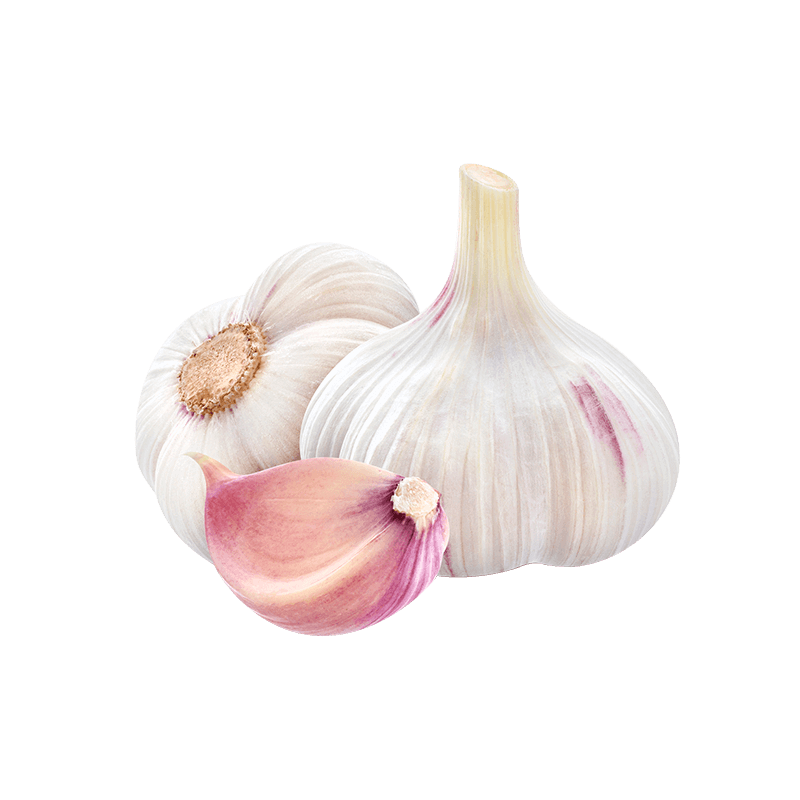Latin name
Allium sativum L.
Origin
Central Asia, Mediterranean and Caucasia, Afghanistan and northern India.
Used part
The bulbs.
Active components
Saccharides (FOS, inulin): promote the balance of intestinal flora.
Essential oil (allicin, DAS, DADS, DATS, AMS): these volatile-sulphur compounds are the components responsible for most health effects. They have antiseptic, antioxidant, hypotensive, and cholesterol-lowering effects and a protective effect on the cardiovascular system. They are also the components responsible for bad breath in those that take them.
Organic sulphur compounds (SAC, SMC, SAMC): prevent the oxidation of cholesterol and have a hepatoprotective effect.
Usage
All over the world, garlic is one of the most common herbs used to bring out the flavour in a dish. It can significantly contribute to the flavour of numerous dishes. Despite the fact that it is the bulbs that are used, the leaves and the flowers are also edible and have a milder flavour. Garlic has been known since the times of ancient Egypt. Over the centuries, it has been used to treat various conditions such as cardiac and circulatory diseases, arthritis, lung diseases, abdominal tumours, diarrhoea and parasitic infections. Modern science tends to confirm most of the beliefs of ancient cultures. Garlic can help to maintain the microbial balance of the intestinal flora and supports the defence against harmful micro-organisms. 1-5 It has a modulating effect in relation to the immune system. 6-13 Thanks to its antioxidants, it combats both the formation of free radicals, thus slowing the premature ageing of the organism, and the oxidation of cholesterol. 14-19 Garlic contributes to the proper function of the heart, the circulation, the normalisation of cholesterol levels and the reduction of the homocysteine content. 20-25 It also protects the liver against the effects of toxins and ensures the proper function of this organ. 26-40 Garlic also has a positive effect on the metabolism of sugar and increases insulin sensitivity. 41-46 And if you have ever been repulsed by the strong odour, you should know that a recent study discovered that drinking milk at the same time as eating garlic considerably reduces the production of malodorous molecules.

